- Size
- Smallest
- Small
- Small to Medium
- Medium
- Large
- Giant
- Characteristics
- Smartest
- Hypoallergenic
- Fluffy
- Best Guard
- Best Family
- Best for Kids
- Low Shedding
- Healthiest
- Police Dogs
- Most Calm
- Quietest
- Color
- White
- Black
- Grey
- Brown
- Blue
- Red
- Coat
- Hairless
- Short
- Long
- Origin
- Japan
- China
- Australia
- Germany
- Italy
- United States
- France
- Group
- Hound
- Terrier
- Herding
- Toy
- Working
- Sporting
Here are the 7 Most Important Dog Commands
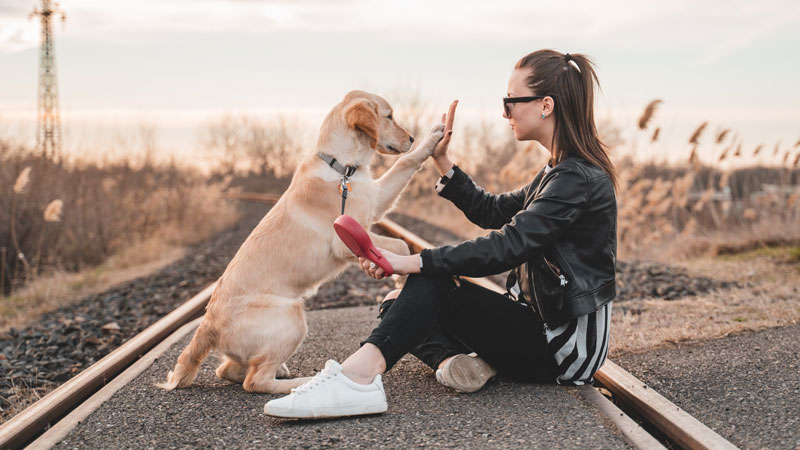
Photo by Richard Brutyo on Unsplash
Welcoming a dog into your home is a joyous occasion, but along with the excitement comes the responsibility of training your new furry friend. Training your dog is an essential part of ensuring their safety, building a strong bond, and establishing good behavior. Among the multitude of commands that you can teach your dog, some are particularly crucial for their overall obedience and well-being.
In this article, we will explore the seven most important dog commands that every pet owner should focus on. These commands will help your dog navigate various situations, promote good behavior, and enhance your relationship with them.
Below are the top 7 essential dog commands that all pet owners should teach their dogs:
- Sit: The Foundation of Obedience
- Come: Ensuring Safety and Strengthening Bonds
- Heel: Enjoyable Walks with Proper Leash Manners
- Stay: Establishing Control and Safety
- Down: Calming Excitement and Creating Boundaries
- Leave It: Preventing Unwanted Interactions
- Place: Designating a Safe Space
1. Sit
The Foundation of Obedience
The "Sit" command is the cornerstone of dog obedience training. Teaching your dog to sit on command serves as the gateway to more advanced commands and helps in managing various situations. Whether it's before crossing a street, greeting guests, or waiting for their food, a well-executed "Sit" command provides a reliable way to control your dog's impulses.
Training your dog to sit is relatively straightforward and can be accomplished using positive reinforcement. Hold a treat above your dog's head, and as they lift their nose to follow the treat, gently guide them into a sitting position. Reward them with the treat and praise, reinforcing the connection between the action and the reward.
Related: Teach Your Dog to Sit: A Step-by-Step Guide
2. Come
Ensuring Safety and Strengthening Bonds
The "Come" command is a vital element in ensuring your dog's safety and maintaining control in various situations. Whether your dog is off-leash in a secure area or needs to return promptly to your side, teaching them to come when called is an essential life skill. This command fosters a strong bond between you and your dog, creating a sense of trust and reliability.
To teach the "Come" command, start in a secure, distraction-free environment. Use a cheerful tone and call your dog's name followed by the command "Come." When your dog responds and approaches you, reward them with praise and treats. Gradually increase the distance between you and your dog, practicing in different environments to reinforce the command.
Related: How to Teach a Dog to Come When Called: The Recall Command Guide
3. Heel
Enjoyable Walks with Proper Leash Manners
A peaceful and enjoyable walk is a shared desire for both dog owners and their pets. The "Heel" command encourages your dog to walk close to your side without pulling on the leash. Teaching proper leash manners enhances the walking experience and prevents your dog from dragging you along. It's particularly useful in busy areas or when encountering other dogs.
Begin training "Heel" by holding the leash with your dog on your left side. Use a treat to guide them into the desired position, rewarding them when they walk calmly by your side. Consistency is key, and over time, your dog will learn to associate the "Heel" command with the appropriate walking behavior.
4. Stay
Establishing Control and Safety
The "Stay" command is a powerful tool for establishing control and ensuring your dog's safety in various situations. Whether you need your dog to stay put during greetings, prevent them from rushing out of doors, or maintain a safe distance in busy environments, the "Stay" command provides a reliable way to manage your dog's movements.
Begin training "Stay" in a quiet and familiar environment. Ask your dog to sit, and once they are in the sitting position, give the command "Stay." Take a step back and pause briefly before returning to reward your dog with praise and treats. Gradually increase the duration and distance as your dog becomes more comfortable with the command.
5. Down
Calming Excitement and Creating Boundaries
The "Down" command instructs your dog to lie down, offering a valuable tool for managing their energy levels and creating boundaries. In situations where sitting might not be practical, such as in crowded spaces or during extended periods, "Down" provides a comfortable and controlled alternative.
To teach the "Down" command, start with your dog in a sitting position. Hold a treat in your hand and guide it toward the ground, encouraging your dog to lower themselves into a lying position. Reward them with treats and praise when they successfully lie down. Consistent repetition and positive reinforcement will help solidify the "Down" command.
Related: Train Your Dog to Lie Down: A Step-by-Step Guide
6. Leave It
Preventing Unwanted Interactions
The "Leave It" command is a crucial tool for preventing your dog from picking up or engaging with potentially harmful items. Whether it's a dropped piece of food, a toxic substance, or an object that could pose a risk, "Leave It" teaches your dog to refrain from interacting with the item and look to you for guidance.
To train "Leave It," start with a treat in your closed hand. Present your closed hand to your dog, and when they show interest, say "Leave It" and wait. When your dog stops trying to get the treat, reward them with a different treat from your other hand. Gradually progress to items on the ground, reinforcing the command in different situations.
7. Place
Designating a Safe Space
The "Place" command instructs your dog to go to a designated spot and stay there until given permission to move. This command is beneficial for creating a specific space for your dog, especially during meal times or when guests are present. It provides structure and helps manage your dog's behavior in various situations.
Start by choosing a designated spot, such as a mat or bed. Encourage your dog to go to that spot using treats and praise. Once they are on the designated spot, give the command "Place" and reward them. Gradually increase the duration they remain on the spot, reinforcing the behavior with positive reinforcement.
Conclusion
Mastering the seven most important dog commands lays the groundwork for a well-behaved and well-trained canine companion. Each command serves a unique purpose, contributing to a harmonious relationship between you and your dog. Consistent training, positive reinforcement, and patience are key elements in successfully instilling these commands.
As you embark on the journey of training your dog, remember that every dog is unique, and the pace of learning may vary. Tailor your training approach to suit your dog's individual personality and capabilities. Embrace the process, celebrate small victories, and enjoy the strengthened bond that comes from effective communication and shared understanding. With these fundamental commands, you and your furry friend can navigate the world together with confidence and joy.
You May Also Like
 Dog Training TipsHow To Train Your Dog To Eye Contact
Dog Training TipsHow To Train Your Dog To Eye Contact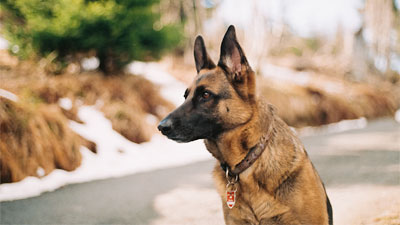 Help & AdviceWhy Won't My Dog Learn To "Stand" Command?
Help & AdviceWhy Won't My Dog Learn To "Stand" Command?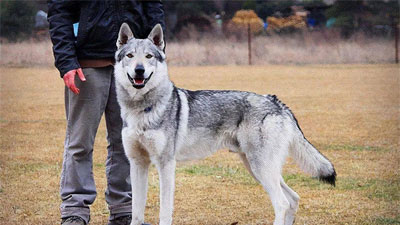 Dog Training TipsThe 'Stand' Command: A Crucial Yet Overlooked Training Cue
Dog Training TipsThe 'Stand' Command: A Crucial Yet Overlooked Training Cue Dog Training TipsThe Place Command: Teach Your Dog to Go to Their Place
Dog Training TipsThe Place Command: Teach Your Dog to Go to Their Place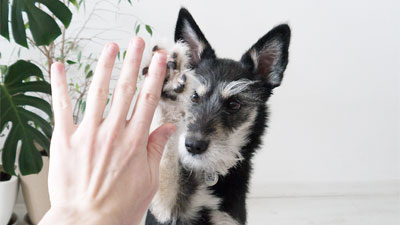 Dog Training TipsDog Tricks: Teach Your Dog to High Five
Dog Training TipsDog Tricks: Teach Your Dog to High Five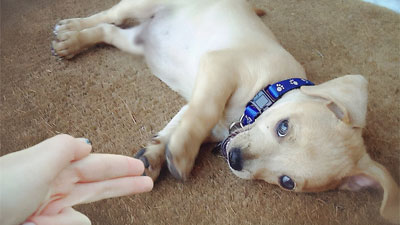 Dog Training TipsTrain Your Dog to Play Dead: A Step-by-Step Guide
Dog Training TipsTrain Your Dog to Play Dead: A Step-by-Step Guide